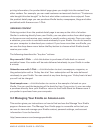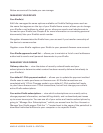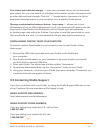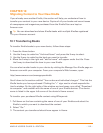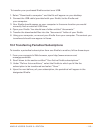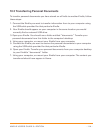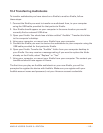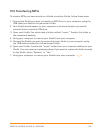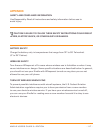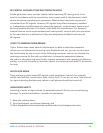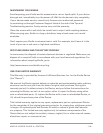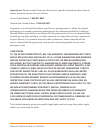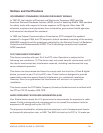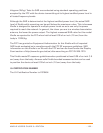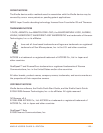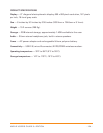
KINDLE USER’S GUIDE 3
rd
EDITION · 121 ·
Notices and Certifications
GOVERNMENT STANDARDS FOR RADIO FREQUENCY SIGNALS
In 1991-92, the Institute of Electrical and Electronics Engineers (IEEE) and the
American National Standards Institute (ANSI) joined in updating ANSI’s 1982 standard
for safety levels with respect to human exposure to RF signals. More than 120
scientists, engineers and physicians from universities, government health agencies,
and industries developed this standard.
In 1993, the Federal Communications Commission (FCC) adopted this updated
standard. In August 1996, the FCC adopted a hybrid standard consisting of the existing
ANSI/IEEE standard and the guidelines published by the National Council of Radiation
Protection and Measurements (NCRP). The Kindle design complies with updated
NCRP standards.
FCC COMPLIANCE STATEMENT
This device complies with part 15 of the FCC rules. Operation is subject to the
following two conditions: (1) This device may not cause harmful interference; and (2)
this device must accept any interference received, including interference that may
cause undesired operation.
This device has been tested and found to comply with the limits for a Class B digital
device, pursuant to part 15 of the FCC rules. These limits are designed to provide
reasonable protection against harmful interference in a residential installation.
However, there is no guarantee that interference will not occur in a particular
installation.
This device meets the FCC Radio Frequency Emission Guidelines and is certified with
the FCC as FCC ID number: WI5-1210.
RADIO FREQUENCY EXPOSURE INFORMATION (SAR)
Your Kindle device meets the U.S. government’s requirements for exposure to radio
waves. Kindle is designed and manufactured not to exceed the emission limits for
exposure to RF energy set by the U.S. FCC.
The exposure standard for wireless devices employs a unit of measurement known
as the specific absorption rate, or SAR. The SAR limit set by the FCC is 1.6 watts per



